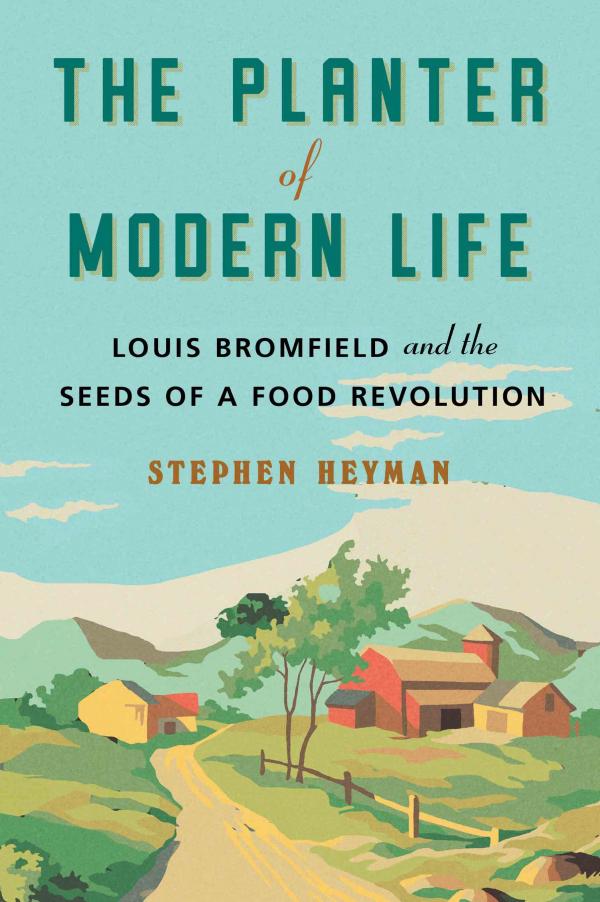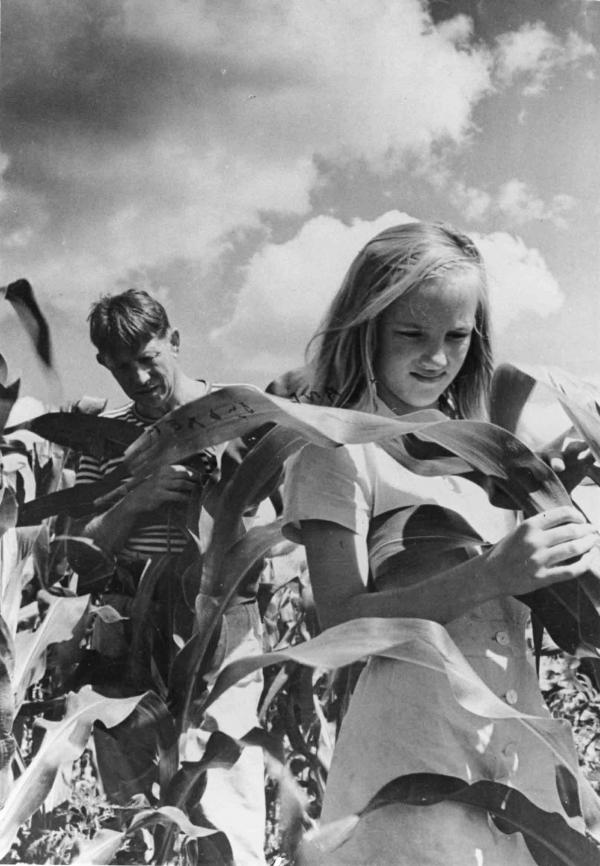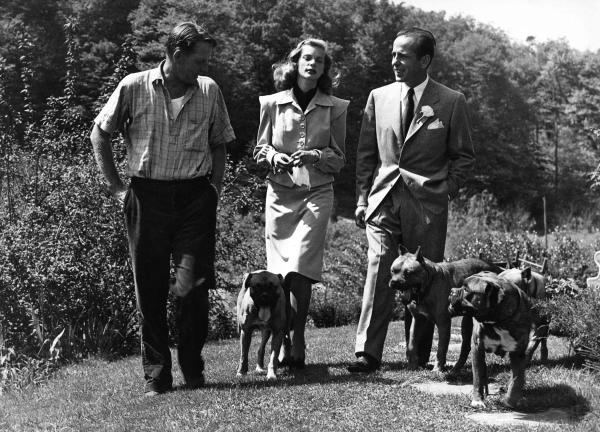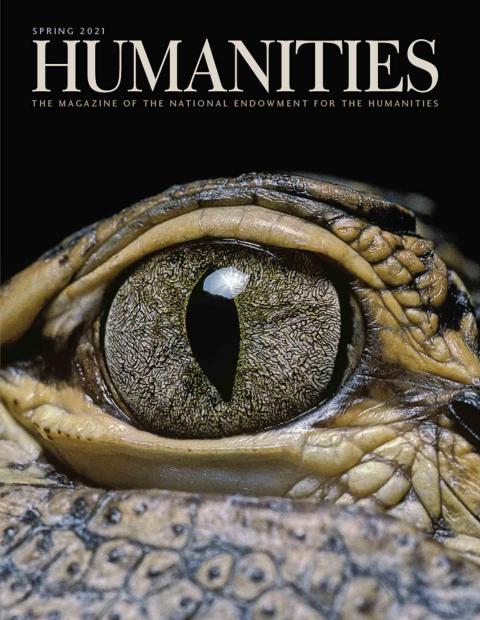In 1927—a year after the publication of Ernest Hemingway’s The Sun Also Rises and two years after F. Scott Fitzgerald’s The Great Gatsby—the New York Times declared one Louis Bromfield to be “the most promising of all the young American authors writing today.” If Bromfield and his works are now almost forgotten (you would be hard-pressed to find a serious reader of literary scholar who recognizes his name, let alone a single title of his three dozen books), he was an immensely popular writer from the 1920s through the ’40s. His novels sold in the hundreds of thousands and were adapted for Broadway and Hollywood. (In 1940, a Bromfield-based film beat out The Wizard of Oz for the Academy Award for Best Special Effects.) A protégé of Gertrude Stein, a friend of Edith Wharton as well as the Algonquin wits, an author so successful that his home was photographed for the pages of Vogue, Bromfield was the kind of runaway success that drew snorting derision from Hemingway and Fitzgerald, who nevertheless found it professionally prudent to dine and socialize with him whenever he invited them to his posh Right Bank apartment.
His career as a writer, however, is perhaps the least interesting thing about him. As chronicled in Stephen Heyman’s The Planter of Modern Life, Bromfield’s true calling emerged during his expatriate days but did not flourish until he returned to America on the eve of World War II. It all began in 1930, when Bromfield leased a sixteenth-century rectory in Senlis, a picturesque village some 30 miles north of Paris in the French department of Oise. What he found there was not only the provincial beauty he craved but a different way of regarding the local conditions, taking into consideration the environment, the climate, and the soil—terroir—which comes from a tradition of nourishing and replenishing the soil’s fertility that was strikingly different from that of the Ohio farm country where he had been raised.
France transformed Bromfield into an aesthete. The house at Senlis became a mecca for artists and intellectuals of all stripes, drawn to the young American’s warm hospitality, his fine food, his exquisite antiques, and especially the flower garden into which he poured much of his superabundant energy. On the banks of the Nonette River, which ran alongside his home, Bromfield created a glorious profusion of color every bit as ambitious (if not nearly as big) as Monet’s famed Giverny. Janet Flanner, the New Yorker’s long-standing Paris correspondent, called it at the time “the finest flower garden of any American in the Île de France.”
That was the seed, as it were—a seed that would require some very particular conditions to take root and thrive. Bromfield and his young family (as well as the menagerie of painters and fashionistas that surrounded them) might have remained indefinitely in Senlis, sipping champagne cocktails and uttering bon mots—were it not for the ominous rise of Nazism. As the French Occupation came to seem inevitable, he ended 14 years of expatriation and returned to the United States. But instead of settling in New York or Hollywood—the logical locations for one of his talent and stature—he relocated his family near his boyhood home in Ohio, purchasing a 600-acre farm he called Malabar after several transformative trips he had taken to India in the early ’30s. It was here, in the hopefully named Pleasant Valley, that he wished to shield his loved ones from the tumult of war and the lingering effects of the Great Depression. And it was here that he embarked—contra his old frenemy Fitzgerald’s famous maxim—on a remarkable second act.
In Ohio, Bromfield transformed himself into an agricultural utopianist. As Heyman writes, he “was the first major writer to give himself over completely to the problems and possibilities of agriculture, to get down into the dirt of it, to become a modern farmer.” Throughout the end of the Depression and the ensuing war years, he became not only a leading authority on crops and livestock, but a forceful advocate for the kind of farming he had observed in France—one that sought to conserve the soil, to farm sustainably, to produce diversity instead of the monocultural row crops that were fast becoming the hallmark of modern industrial farming.
As usual, he showed a knack for being in the right place at the right time. The United States was just emerging from an economic collapse that had been intensified by the environmental disaster of the Dust Bowl. Generations of crop farmers, dating back to the nation’s founding, had regarded the land as a resource to be exploited, planting huge tracts of corn or cotton or tobacco until the soil was exhausted and they had to move westward. Plowing up the prairie had resulted in countless acres of exposed topsoil from Texas to the Dakotas, which was then lifted into the atmosphere by the wind, where it darkened the sky, harmed people’s health, and eventually reached as far east as Washington, D.C. At a time when many Americans were questioning the financial and agricultural systems that had caused these twin catastrophes, Bromfield became the nation’s most famous farmer, its most visible spokesperson for a different approach to agriculture. Before long, he was testifying before Congress and delivering hundreds of talks to local farming groups, where he advocated a conservationist approach to the land.
He preached the use of compost and manure instead of chemical fertilizers. He proselytized for the benefits of contour farming. He raised chickens, cattle, and hogs and sold his varied produce at his own private farmer’s markets. He published books that detailed his experiences on the farm, inspiring countless young people (including a young George Herbert Walker Bush and the esteemed environmentalist writer Wendell Berry). And he helped insert into the American lexicon a new set of terms: organic, sustainable, environmental.
Bromfield was by no means alone in all this. During the 1930s a wide range of intellectuals and scientists—from bureaucrats at the Agricultural Adjustment Administration to the Southern Agrarian social critics—advocated a back-to the- land ethos that placed Thomas Jefferson at the center of a reimagined tradition of land stewardship. But Bromfield was the most famous person to espouse these ideas. To a wide swath of the American public, his farm became a kind of experiment in sustainable living, a modern version of Henry David Thoreau’s stint at Walden Pond a century earlier. In nationally syndicated newspaper columns, magazine pieces, and books, Bromfield wrote about his efforts to create a farm that operated in harmony with nature, sustaining itself without depleting the land.
But the truth about Malabar Farms was never as straightforward nor as entirely triumphant as Bromfield presented it. For all his tireless efforts and experimentation, the place never returned as much money as Bromfield put into it. The lifestyle at Malabar was far too lavish and expensive to be recouped by simple farming. (The big farmhouse Bromfield helped design, for instance, contained 32 rooms.) To compensate, Bromfield was forced to sacrifice some of his earlier ideals, reducing the farm’s diversity (he quit growing corn and wheat, for instance) and concentrating instead on livestock, especially cattle, which we now understand to be the most carbon-intensive of all agricultural products.
Given Bromfield’s personality, none of this is particularly surprising. In Heyman’s telling, this larger-than-life figure was so busy, so active, so restless, so involved in a wide range of causes and projects, that the contours of his personality become a little blurred. Between seemingly endless cigarettes and tumblers of bourbon, he somehow managed to dash back and forth from Malabar to Hollywood, then off to New York to collaborate on a libretto for a Balanchine ballet about Johnny Appleseed, before rushing to Washington to squabble over farming policy with Eleanor Roosevelt—all the while churning out novels that were increasingly slapdash, loose-jointed, and predictable.
It is these later works especially that contributed to Bromfield’s literary eclipse. Writing is a lot like gardening—both pursuits require patience, imagination, daily cultivation. The list of talented authors who nourished and were nourished by their gardens is impressive, from Wharton to the recent Nobel Prize winner in literature Louise Glück. Yet Bromfield had a tendency to overextend himself. If his writing detracted from his day-to-day management of the farm, the time and energy he spent trying to keep his farm afloat also meant that his prose suffered. By the 1950s, he was increasingly viewed by the literary establishment as a hack, a cautionary tale of what happened when high living and too many extracurricular interests interfered with the sacred calling of art.
None of this seemed to bother Bromfield. He considered his farm a work of art. Certainly it was something of a celebrity. In 1945, and to enormous press fanfare, Lauren Bacall and Humphrey Bogart were married in the Big House of Bromfield’s farm. (Bromfield had met Bogie years earlier and was a frequent guest aboard the screen actor’s sailboat.) Three years later—with Bromfield’s nonfiction Malabar Farm selling briskly—E. B. White was moved to write a sardonic poem about the place for the New Yorker:
A farm is always in some kind of tizzy,
But Bromfield’s place is really busy:
Strangers arriving by every train,
Bromfield terracing against the rain. . . .
Bromfield’s expatriate friends Gerald and Sara Murphy had famously announced that “living well is the best revenge.” But there is also a kind of revenge taken on those who live too well. Before he was sixty, Bromfield was diagnosed with terminal cancer. His death would be much like his life: a whirl of restless activity punctuated by moments of insight. Just before his death, during a visit to his daughter’s farm in Brazil, he took stock of his life, trying to understand exactly what had compelled him to invest so much of himself into an unpromising plot of ground in Ohio and to subordinate his promising career as a writer to the less glamorous pursuit of agriculture. Ultimately, he decided that he had been driven by a sense that all life was holy and worth preserving, that humans were part of a much wider web of creation that deserved steady attention. He now believed there was no better way to spend one’s life than to live out this ideal—an ideal that no one knew better than the farmer, “for he lives close enough to life to hear the very pulsations of the heart.”
From today’s perspective, Bromfield’s ideas ring with prophetic clarity. He wrestled with the ethics of eating animals, for instance, admitting that it was difficult to consume a creature one had raised from birth and come to regard as a friend. He considered the widespread growing of corn “the most expensive feed a farmer can employ,” and warned of the hazards of overreliance on chemical fertilizers. More than anything, he warned against the American tendency to view its abundant land as a disposable resource.
And his legacy continues in another way, at the Malabar Farm State Park, which before the pandemic hosted tens of thousands of visitors each year. Environmentalists, aspiring farmers, and vacationers stopped in at the Big House to see where Bogie and Bacall were married and peer into the mint-green studio/library/bedroom where the author spent much of his later years. (“Houses, like people,” Bromfield wrote, “have personalities, and, like the personalities of people, they are partly molded by all that has happened to them.”) The park provides free camping, a petting farm for children, and a maple syrup festival—all efforts to counter Bromfield’s warning, “As soils are depleted, human health, vitality and intelligence go with them.”







